Bayes
UFOs
(example taken from Kurt, 2019)
- You are awakened by a bright light at your window.
- You get out of bed and see a saucer-shaped object in the sky.
- Although you don’t believe in aliens, you think to yourself “could this be a UFO?”
UFOs
- You observed data
- You formed a hypothesis
- You updated your beliefs based on the data.
(example taken from Kurt, 2019)
UFOs
- “The probability of observing bright lights outside the window and a saucer-shaped object in the sky is very low.” Or:
- \(P\)(bright light outside your window, saucer-shaped object in the sky) = very low
UFOs
- The probability of observing bright lights and a saucer-shapd object in the sky, given our experience on Earth, is very low. Or:
- \(P\)(bright light outside your window, saucer-shaped object in the sky | our experience on earth) = very low
- This is called a conditional probability; are conditioning the probabiltiy of one event occurring on something else.
UFOs
- Probability of hypothesis, given experience:
- \(P(H_1 \mid X)\) = very, very low.
- But what if \(H_2\) = a film is being made outside your window?
- \(P(H_1 \mid X)\) = very low.
(example taken from Kurt, 2019)
UFOs
Perhaps we have a new hypothesis?
- \(P(D_{updated} \mid H_2, X) >> P(D_{updated} \mid H_1, X)\)
- The probability of the data, given the second hypothesis, is much greater than the first.
UFOs
We can express the comparison of these two hypotheses as a ratio:
\(\frac{P(D_{updated} \mid H_2, X)}{P(D_{updated} \mid H_1, X)}\)
If this is a large number (like 1000), it means that \(H_2\) explains the data 1,000 times better than \(H_1\)
(example taken from Kurt, 2019)
Converting Odds to Probability
\(P(H) = \frac{O{H}}{1 + O(H)}\)
You give your friend 6:1 odds that Northwestern will beat Purdue in basketball. You’ll give your friend $30 if Purdue wins, he will only pay you $5 if Northwestern wins.
\(P(NU Win) = \frac{O(NU Win)}{1 + O(NU Win)} = \frac{6}{7} = .857\)
You are giving NU about an 86% chance of winning.
Inverse Probability
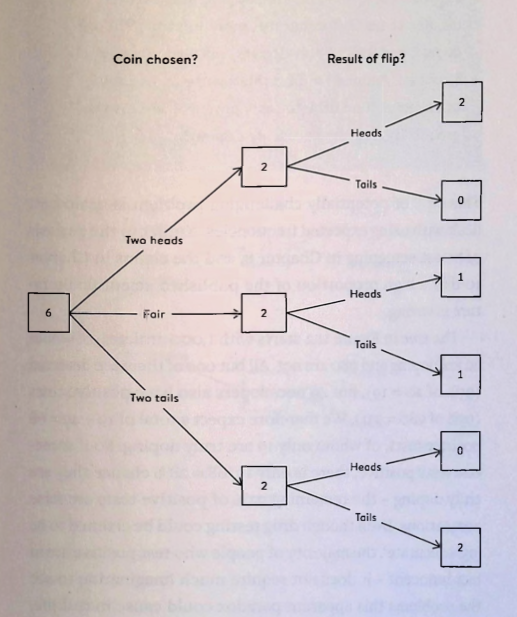
Spiegelhalter Coin Flip
Inverse Probability
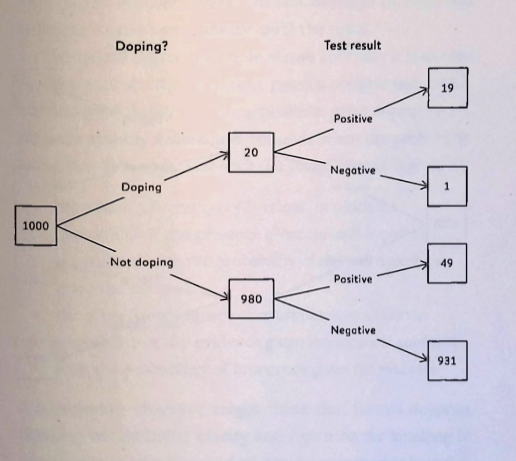
Spiegelhalter Doping
Inverse Probability
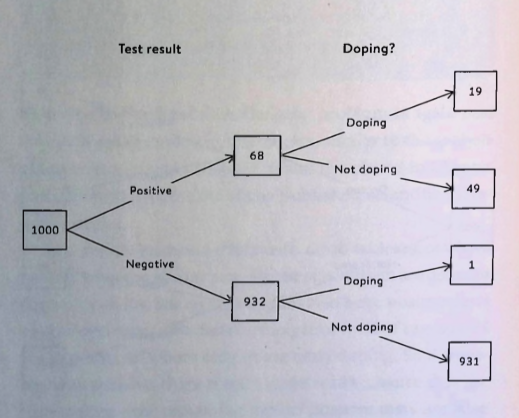
Spiegelhalter Doping
Richard III (see Spiegelhalter, p.317)
- Richard III, who Shakespeare characterized as an evil hunchback, was said to have been buried in Greyfriars Priory in Leicester.
Richard III (see Spiegelhalter, p.317)
We might assume that a skeleton found were the remains of Richard the III if all of the following were true:
- he had really been buried in Greyfriars
- his body had not been dug up and moved or scattered in the intervening 527 years
- the first skeleton found happened to be him.
Richard III (see Spiegelhalter, p.317)
- Let’s say 50% chance the stories of his burial were true
- Let’s say 50% chance that his skeleton is still where he was originally buried in Greyfriars
- Imagine that up to 100 other bodies were also buried in this location.
- 1/2 * 1/2 * 10/100 = 1/400.
Richard III (see Spiegelhalter, p.318)
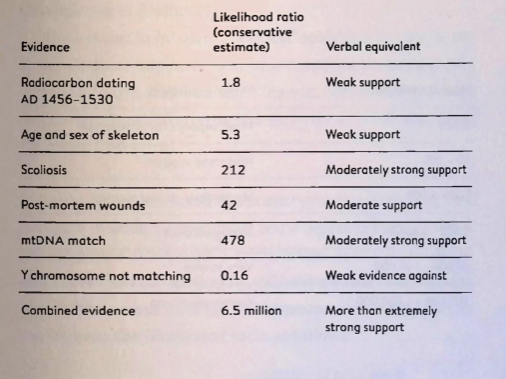
Spiegelhalter Richard III
Richard III (see Spiegelhalter, p.320)

Spiegelhalter Richard III
The Posterior
The probability of a hypothesis given the data is called the posterior.
the posterior is proportional to the likelihood times the prior.
\(P(H \mid D)\) is proportional to \(P(D|H) x P(H)\)
Comparison
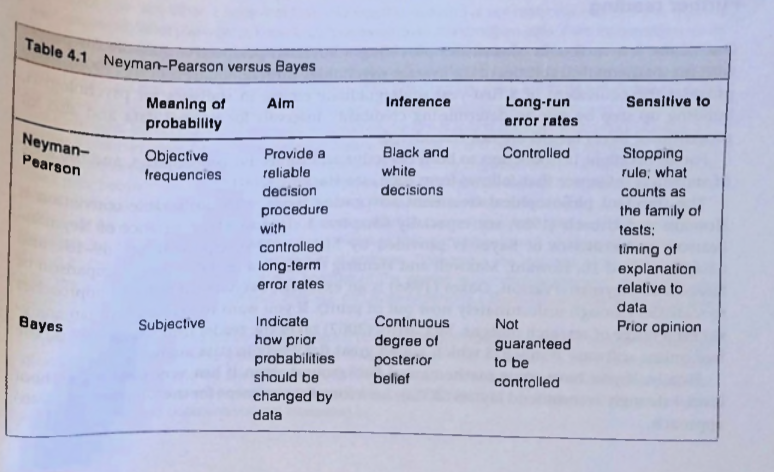
Dienes comparing methods